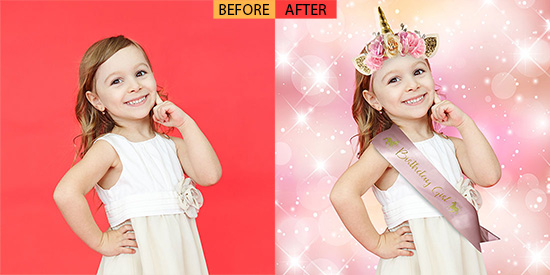Fashion photography editing not only enhances images by improving aesthetics and highlighting style but also plays an essential role in creating compelling visual narratives in fashion media.
Fashion photography editing is a critical aspect of the fashion industry. It breathes life into photos and makes them stand out in a crowded marketplace. Skilled editors use advanced software like Adobe Photoshop and Lightroom to refine colours, adjust lighting, and manipulate elements to convey the desired mood or concept.
They diligently work to ensure that every detail, from the model’s skin texture to the flow of the fabric, aligns seamlessly with the creative vision of designers and photographers alike. This process showcases clothing and accessories in their best light, helps define the latest trends, and effectively promotes brands. Properly edited images capture consumers’ attention, making them vital tools for marketing and brand storytelling within the fashion realm.
Introduction To Fashion Photography Editing
Fashion Photography Editing enhances and refines the visuals photographers capture during fashion shoots. The process involves a meticulous approach to adjusting colour balance, skin textures, and clothing details, ensuring every image exudes the essence and style intended. Post-processing plays a pivotal role in fashion imagery, dramatically transforming a good photo into a remarkable piece of art that stands out in the highly competitive fashion industry.
The choice of software and tools directly impacts the quality of the final output. Professional editors rely on established programs such as Adobe Photoshop and Lightroom, each providing a comprehensive suite of features designed for precision editing. Beginner-friendly options, like Capture One, also offer intuitive interfaces alongside powerful adjustment capabilities.
Techniques To Elevate Your Fashion Photos
Colour correction is pivotal in setting the right tone for fashion images. By adjusting white balance and saturation, photographers ensure that the colors in their work accurately represent the mood they aim to convey. Effective cropping further enhances the composition, emphasizing the subject and eliminating distractions.
For flawless skin, sophisticated retouching tools are indispensable. Frequency separation and healing brushes smooth out imperfections without compromising texture integrity. These advanced techniques contribute to a polished, high-fashion look.
Lighting and filters set the atmosphere for fashion photography. Whether seeking to create a soft, dreamy effect or a dramatic contrast, the careful application of these elements adds depth and dimension to the images. Photography filters subtly adjust shades, ensuring the lighting complements the fashion pieces.
The textures and fabrics make fashion photography pop, and enhancing these elements draws the viewer’s eye. Through sharpening techniques and contrast adjustments, photographers highlight the intricate details of the materials, allowing every thread and weave to become more pronounced and vibrant.
Workflow Optimization For Fashion Editing
Setting up an efficient editing workflow is crucial for the success of fashion photography projects. By creating a seamless process, editors can reduce the time spent on each photo, allowing for a greater focus on creativity and detail. Utilizing software with batch processing capabilities can vastly improve efficiency, enabling the application of consistent edits across multiple images. Establishing a systematic approach from the onset of a project is essential to ensuring a smooth transition from one phase to the next.
Efficiently managing high-volume work through batch processing is a game-changer. Additionally, it enables the application of similar adjustments to many photos simultaneously, maintaining a consistent look and feel across a fashion series while saving time and resources.
Implementing organizational tips is crucial for managing fashion photography projects effectively. A well-structured file naming convention and tagging system can make locating specific images a breeze, streamlining the workflow and reducing the potential for error. Keeping a meticulous record of edits also allows for effective version control and collaboration between team members.
It is essential to be aware of and avoid common pitfalls in fashion photo editing to achieve the desired outcome without setbacks. Over-editing, neglecting to maintain image quality, and losing track of original files can harm the project’s integrity. A focused approach, paired with a keen eye for detail, ensures that each photograph is treated with the right balance of technique and artistry.
The Ethics Of Fashion Photography Editing
Fashion Photography Editing stirs debate, balancing artistry with ethical responsibilities. Editing can transform raw images into stunning visuals, yet the line between enhancement and misrepresentation remains blurred. The industry often treads a delicate path, considering the implications of altering images that may influence public perceptions of beauty.
- Understanding the Controversy: Ethical considerations arise when edits alter body shapes, leading to unrealistic standards. It is crucial to maintain a balance, ensuring editing enhances without deceiving.
- Promoting Body Positivity: Post-processing must uphold body diversity and encourage positive self-image. Minimizing alterations, especially around body size and skin texture, can contribute to more ethical fashion photography practices.
- Adhering to Industry Standards: Guidelines exist to promote integrity in fashion imagery. Following these standards is imperative to maintaining trust and authenticity within the industry.
Recognizing that each image is a representation that can impact viewer perceptions, photographers and editors are called to act responsibly. Commitment to producing ethical fashion photography shapes a more authentic portrayal of beauty aligned with social responsibility.
Staying Ahead Of The Curve: Trends And Innovations
Fashion photography and editing evolve with innovations, blending mixed media for dynamic visuals. Embracing mixed media and graphic design elements has become a hallmark of contemporary fashion imagery, leading to dynamic visuals that blend photography with artistic illustrations.
Artificial Intelligence (AI) and machine learning technologies are revolutionizing editing. These tools offer advanced capabilities such as style transfer, automated retouching, and intricate pattern recognition, allowing for unprecedented creativity and efficiency in fashion photography workflows.
Seamlessly integrating photography and graphic design provides a fresh perspective and opens up new avenues for expressive storytelling within the fashion industry. Professionals harness these technologies to create compelling, avant-garde pieces that stand out in a highly competitive market.
Showcasing Your Work: Platforms And Portfolio Tips
Consider platforms like Instagram and Behance for showcasing your fashion photography. Additionally, explore online galleries and communities for exposure and feedback.
Selecting the right platforms to display fashion photography is crucial for reaching your target audience and professional peers. High-quality images on social media like Instagram harness the medium’s visual nature, while dedicated portfolio websites, such as Behance, provide a more curated space. Professionals should consider leveraging online galleries for increased visibility and photography communities for feedback and exposure.
Building a portfolio that highlights editing skills requires showcasing before and after shots, which can demonstrate the photographer’s ability to transform a good photo into a stunning one. Including various images with different editing techniques showcases versatility and skill depth. Presenting a consistent aesthetic to convey your unique style and editing perspective is crucial.
Networking and collaborating within the fashion industry are essential for career growth. Joining fashion photography groups and participating in forum discussions can lead to partnerships. Attending fashion events and workshops allows for hands-on opportunities to meet industry influencers and potential clients, creating a productive environment for professional development.
Frequently Asked Questions Of Fashion Photography Editing
How do Fashion Photographers edit their photos?
Fashion photographers typically use software like Adobe Photoshop and Lightroom to edit photos. They adjust lighting and color balance, retouch imperfections, and sometimes manipulate images to achieve their desired aesthetic.
What is Fashion Photo Editing?
Fashion photo editing involves enhancing or altering clothing and model images to boost visual appeal for marketing, magazines, and e-commerce platforms. Editors correct colors, retouch models, and adjust backgrounds to create striking, high-quality fashion photographs.
How do I edit clothing photos?
To edit clothing photos, select robust image editing software. Use cropping, adjusting brightness and contrast, and retouching to enhance the photo quality. Features like the clone stamp or healing brush can remove unwanted spots or blemishes.
Permanently save your edits in a high-quality format.
What software do Fashion Photographers use?
Fashion photographers commonly use Adobe Photoshop and Lightroom for editing, Capture One for tethered shooting and various plugins for retouching and color grading.
Conclusion
Enhancing your fashion photography with expert editing sets your work apart. Masterful retouching breathes life into images, engaging viewers and elevating your portfolio. Embrace these editing techniques to transform good shots into unforgettable visuals—your fashion story awaits its polished final chapter.



